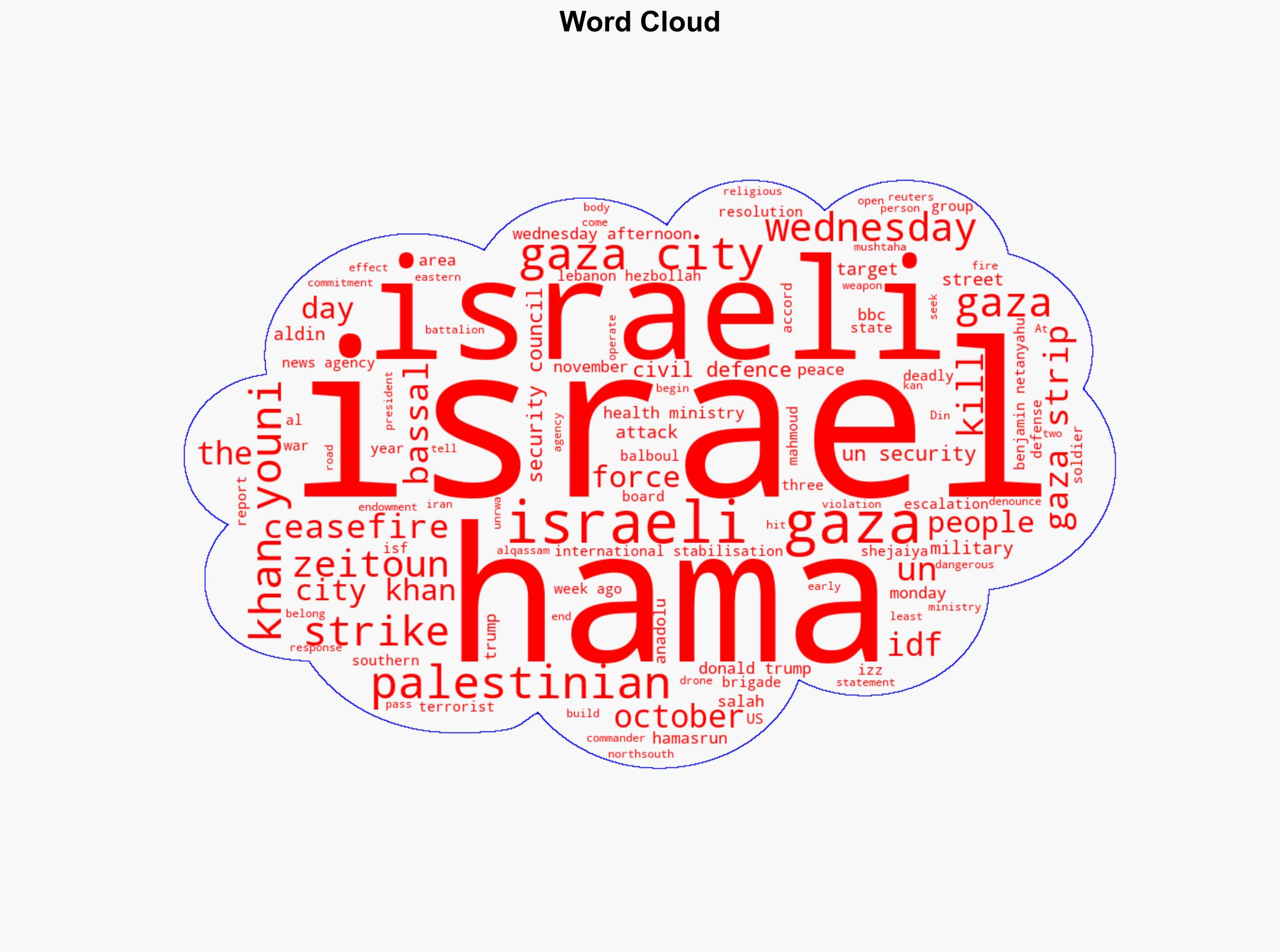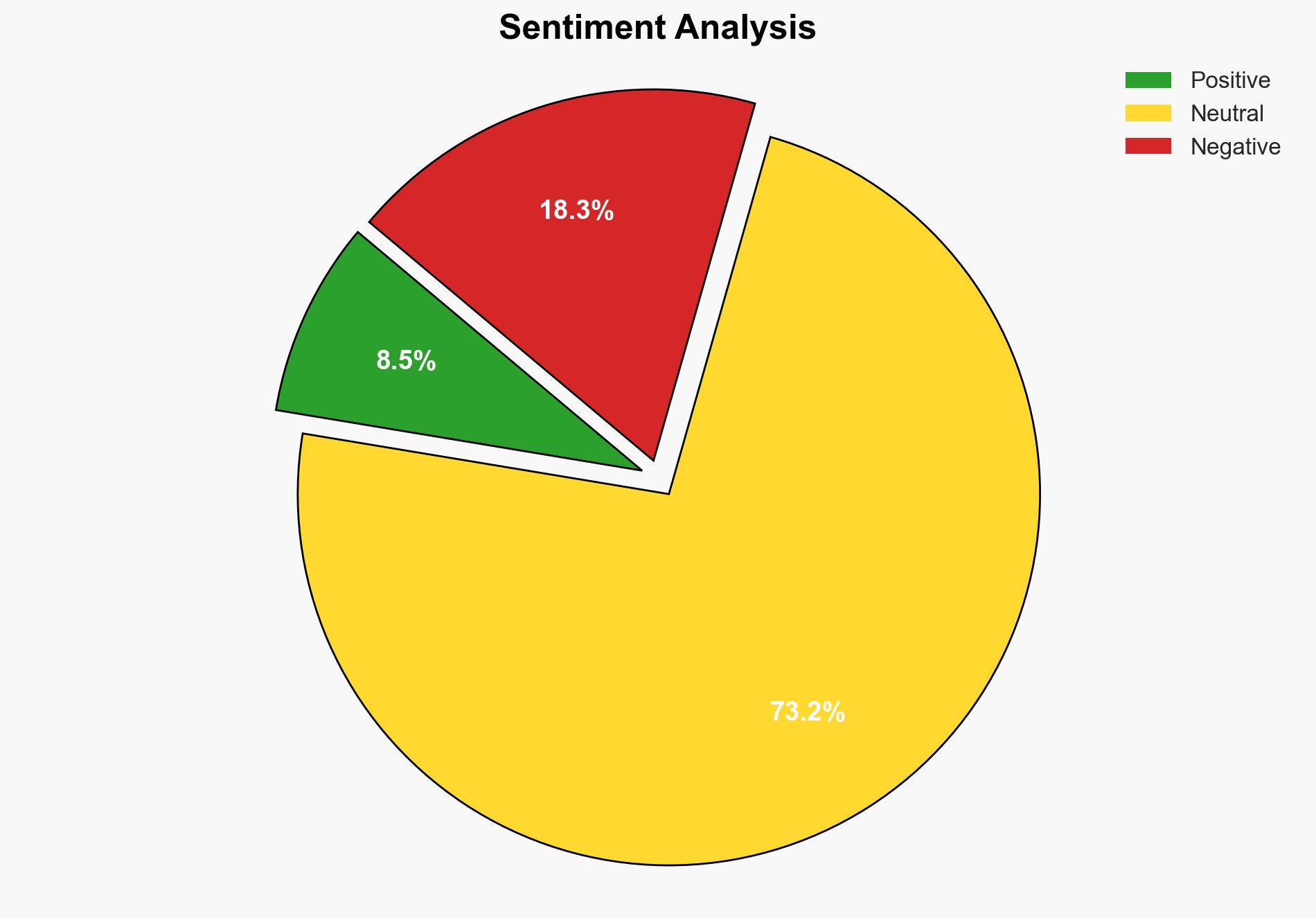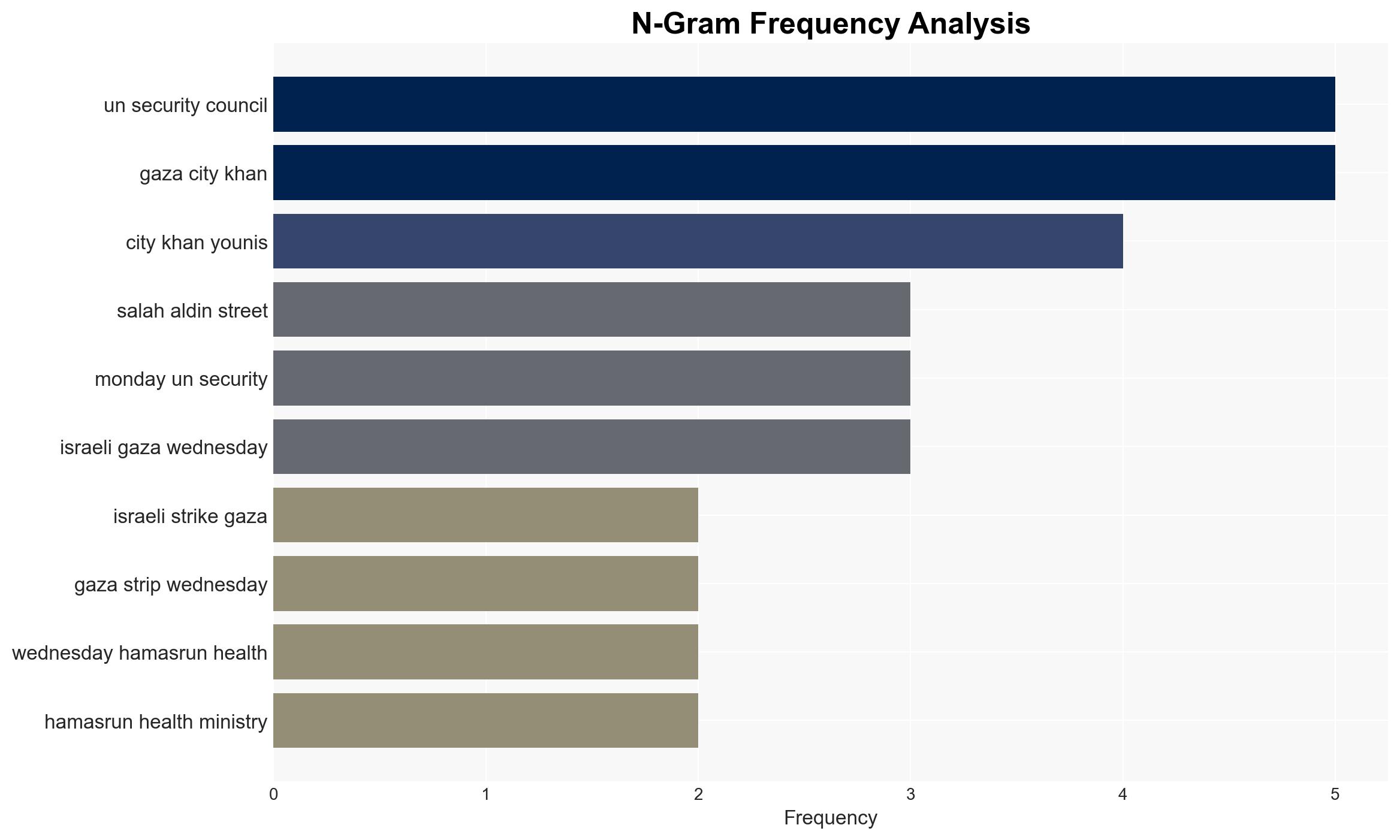Israeli strikes across Gaza kill 25 Palestinians health ministry says – BBC News
Published on: 2025-11-19
AI-powered OSINT brief from verified open sources. Automated NLP signal extraction with human verification. See our Methodology and Why WorldWideWatchers.
Intelligence Report:
1. BLUF (Bottom Line Up Front)
The most supported hypothesis is that the recent Israeli strikes in Gaza are a response to perceived violations of the ceasefire by Hamas, with a medium confidence level due to the complexity of the geopolitical environment and potential for misinformation. It is recommended that diplomatic channels be reinforced to stabilize the ceasefire and prevent further escalation.
2. Competing Hypotheses
Hypothesis 1: The Israeli strikes are a direct response to Hamas violations of the ceasefire, specifically targeting military assets to neutralize immediate threats.
Hypothesis 2: The strikes are part of a broader strategic initiative by Israel to weaken Hamas’ military capabilities and enforce compliance with the ceasefire, potentially leveraging the situation to gain international support for more stringent measures against Hamas.
Hypothesis 1 is more likely due to the immediate context of reported fire from Hamas and the IDF’s stated objective of targeting military assets. However, Hypothesis 2 cannot be discounted given Israel’s historical strategic objectives and recent international developments.
3. Key Assumptions and Red Flags
Assumptions: It is assumed that the reports from both Israeli and Palestinian sources are accurate and not exaggerated for political gain. The ceasefire terms are assumed to be clearly defined and understood by both parties.
Red Flags: Potential bias in reporting from both sides, lack of independent verification of events, and the possibility of misinformation or propaganda to sway international opinion.
4. Implications and Strategic Risks
The continuation of hostilities poses significant risks of further escalation, potentially drawing in regional actors and complicating international diplomatic efforts. There is a risk of increased civilian casualties, which could inflame public opinion and lead to broader unrest. Economically, prolonged conflict could disrupt regional trade and impact global markets sensitive to Middle Eastern stability.
5. Recommendations and Outlook
- Immediate diplomatic engagement with both Israeli and Palestinian leadership to reinforce the ceasefire agreement and address grievances.
- Deployment of international observers to verify compliance and provide unbiased reporting.
- Best-case scenario: Reinforcement of the ceasefire leads to a de-escalation of hostilities and a return to diplomatic negotiations.
- Worst-case scenario: Full-scale conflict resumes, leading to significant regional instability and international intervention.
- Most-likely scenario: Sporadic violence continues with intermittent diplomatic efforts to stabilize the situation.
6. Key Individuals and Entities
Benjamin Netanyahu, Israeli Prime Minister; Mahmoud Bassal, Hamas-run Civil Defence Agency Spokesman; Donald Trump, former U.S. President involved in the peace plan endorsement.
7. Thematic Tags
Structured Analytic Techniques Applied
- ACH 2.0: Reconstruct likely threat actor intentions via hypothesis testing and structured refutation.
- Indicators Development: Track radicalization signals and propaganda patterns to anticipate operational planning.
- Narrative Pattern Analysis: Analyze spread/adaptation of ideological narratives for recruitment/incitement signals.
Explore more:
Counter-Terrorism Briefs ·
Daily Summary ·
Support us





